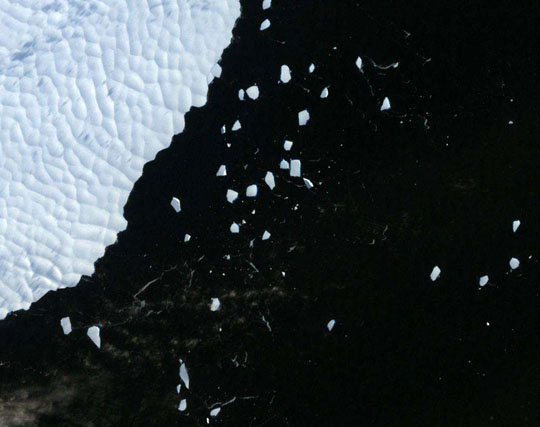


More than a decade ago a large iceberg (over a thousand square miles in area, and a quarter of a mile thick) broke off an Antarctic glacier and drifted into the Southern Ocean. The National Iceberg Center, which monitors sea ice in shipping lanes, christened the giant B10 in 1992. In 1995 B10 split into two pieces. Amazingly, the larger piece (B10A) was still the size of Rhode Island. By the summer of 1999 it had moved out of the isolated waters around Antarctica and near the Drake Passage, which ships use to navigate around the southern tip of South America.
This true color Landsat 7 image shows relatively small icebergs "calving" off the edge of B10A. Since B10A is now in relatively warm water, it is breaking up more rapidly than before. The new icebergs are drifting into international shipping lanes, posing a threat. Remote sensing satellites such as Landsat 7, SeaWinds, and Radarsat are being used to monitor B10A and its child icebergs.
For more information:
Landsat 7 fact sheet
QuikSCAT (SeaWinds) fact sheet
JPL QuikSCAT press release
National Ice Center B10A page
Image courtesy Landsat 7 project